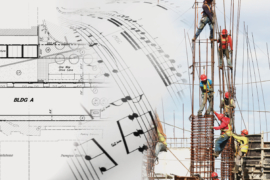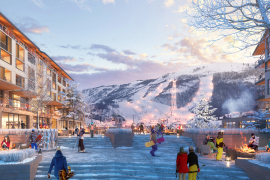COVID-19 really impacted our business along with every other business in the world, for better or for worse. After the initial shock to the world that drove our hotels to record lows in occupancies and daily room rates, we picked ourselves up and set out to find the opportunities amidst all the stressful commotion. As an executive team, we firmly believed that if we didn’t come out of this unprecedented time as a better company, we likely missed out on an opportunity to grow. We took this thought to heart, hunkered down, and looked not only inward at the company but also outward for additional opportunities. Inwardly, we examined and reworked our processes, and we enhanced our manners of operation—a wonderful but challenging experience. Outwardly, we looked at the marketplace—what will be or could be the new trends, desires, and appetites of humanity? Where could PEG’s strengths as a vertically integrated multifamily/hospitality developer be best leveraged in the marketplace?
Ultimately, we played off our strengths to create several investment strategies that we believe will prove to be profitable through both the immediate and foreseeable future, as outlined below:
Extended-Stay Hotel Conversion to Apartments. This strategy helps to solve the nationwide workforce housing crisis by providing quality multifamily housing at an attainable price. We are acquiring older extended-stay hotels nationwide and converting them to attainable Class B multifamily housing. Not only is this strategy helping America’s middle class, but it is also providing excellent returns for our investors. Our Extended Stay Conversion Fund (ESCF) is in the final capital raising stage, and we have already closed on a number of extended stay hotels that we have converted into apartments. Demand for this type of product has outpaced expectations, and we have seen rent increases of up to 20% in a single year on some of our properties.
Since acquiring our first portfolio of extended stay hotels four years ago from Blackstone, PEG has refined its acquisition, entitlement, and renovation processes. Thanks to a seasoned vertically integrated team (investment, development, construction management, marketing, and property management) PEG has executed on deals from start to finish. We are confident that we are the most experienced developer in the nation when it comes to extended-stay-hotel-to-multifamily conversions.
Build-for-Rent housing. Due to the post-pandemic surge in home prices, affording a house has become increasingly difficult for individuals who prefer to live in a product where nobody lives above or below them. Renting single-family product (townhomes, horizontal apartments, smaller single-family homes) in a professionally managed community to individuals seeking flexible lifestyles, seeking to start a family, and/or looking for a bit more space is a trend we believe is going to continue to remain in high demand into the future. This build-for-rent (BFR) product type is in extreme demand in the Mountain West region where we’re also experiencing incredibly strong population and job growth. With favorable work and living conditions, the Mountain West has become the ultimate investment location for capital over the past several years. PEG’s vertically integrated team (property management, development, construction management, marketing) last year became one of the first groups to launch a systematized strategy around BFR in the region.
Residence Inn by Marriott. PEG Companies created a vertical strategy with the sole purpose of replacing the company’s current nationwide portfolio of 11 generation one Residence Inns, all originally built in the 1980’s. To date the team has been focused on replacing six of the 11 properties by identifying replacement sites, placing them under contract, and securing the franchise agreements. All six markets are high-barrier-to-entry and performed above average even during the pandemic, a timeframe represented the largest decline in RevPAR in US history. Extended-stay hotels (including Residence Inn) outperformed all other classes of hotels during the pandemic. The Residence Inn is Marriott’s flagship brand.
This replacement strategy is highly favored not only with PEG Companies but also with Marriott International because we are replacing old, existing hotels in proven, stabilized markets with consistent demand. When executed as planned, the old gen 1 properties could close within days of the new hotels’ openings. Existing accounts and guests will never be displaced and will have time to prepare for the transition, and even more importantly for PEG Companies and Marriott, the typical ramp-up for a new hotel (which is about three years) should be reduced to just a few months. Finally, all six replacement hotels are anticipated to open in 2024 or early 2025, just as RevPARs are expected to return to, and even exceed, pre-COVID levels.
Multifamily Development. A continued “bread and butter” strategy for PEG will be multifamily development. We anticipate kicking off a $200M fundraise later in 2022, specifically focused on multifamily development in the Mountain West and select target markets. PEG has an extremely solid track record of developing high quality multifamily product. We see several specific trends that have taken form over the past several years that we believe will not dissipate including work-from-home space, collaborative workspace amenities, and other features that the COVID-19 pandemic elevated as noteworthy and necessary. We do recognize the healthy number of units coming onto the market, but we feel confident that our product and locations will continue to outperform others in the market.
Overall, an observer could deduce from our given strategies that we are bullish on the for-rent housing marketplace and are cautiously optimistic with certain specific hotel products and markets. We are aware of inflation and anticipated rate increase environment and are running our financial models with these concerns under consideration. Given these certain dynamics, we are extremely excited to be where we are and to execute on the aforementioned strategies.
















